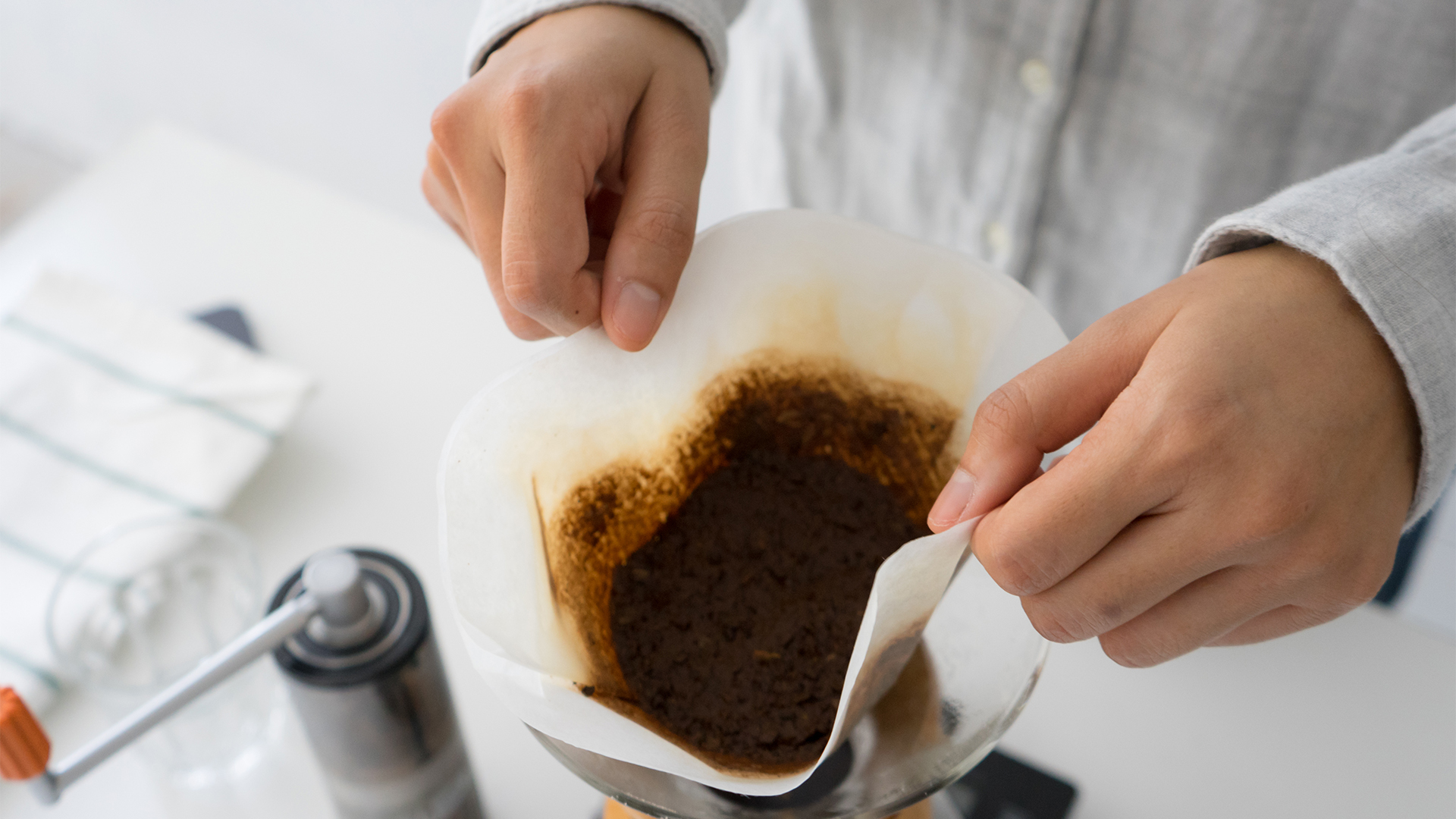Used coffee grounds make concrete 30% stronger
Used coffee grounds that are heat treated increase the compression strength of concrete.

Swapping some of the sand in concrete for spent coffee grounds could increase the strength of concrete by nearly 30%, a new study suggests.
A whopping 2 billion cups of coffee are consumed globally every day, according to the British Coffee Association. But most of the coffee grounds end up in landfills, where the waste slowly decomposes to produce methane, a greenhouse gas 21 times more potent than carbon dioxide, according to the new study.
Researchers in Australia may have found an efficient recycling solution for all this coffee waste: using it to replace some of the sand in concrete. The construction industry usually mines sand from rivers, lakes and deltas, so swapping out this important sediment could also protect habitats across the world, the team said. The concrete partially made of coffee grounds is also stronger than traditional concrete, they found.
For their study, published online July 21 in the Journal of Cleaner Production, the researchers collected spent coffee grounds from local cafes across Melbourne and investigated how different proportions and pretreatments of this coffee waste affected the properties of concrete. They found that replacing 15% of the sand with treated coffee grounds improved the compressive strength.
But how does this extraordinary substitution work?
"Ordinary concrete is composed of a cementitious binder (i.e., the cement mix and water), sand, and a coarse aggregate such as gravel in well-designed proportions depending on the intended application," Holmer Savastano Junior, a civil engineer at the University of São Paulo in Brazil who was not involved in the study, told Live Science in an email. A complex series of hydration reactions between the water and the compounds in the cement mix causes the concrete to harden and set, but the sand also plays a vital role.
"The sand and other aggregates are generally identified as inert materials and don't participate in these hydration reactions," he said. "But they are responsible for the stability, integrity, and macrostructural performance of the concrete — they can be roughly compared as the skeleton elements in our bodies."
Get the world’s most fascinating discoveries delivered straight to your inbox.
In the new study, the researchers quickly found that raw coffee grounds significantly weakened the resulting concrete. "The untreated spent coffee can release chemicals into the fresh concrete mixture and poison the chemical hydration reactions that are responsible for the early stage hardening and setting of the cementitious binder," Savastano said. However, by using a chemical treatment known as pyrolysis, the team improved the properties of this coffee waste and turned it into a suitable sand replacement they called coffee "biochar."
Pyrolysis involves heating a material to high temperatures — in this case, 662 to 932 degrees Fahrenheit (350 to 500 degrees Celsius) — to chemically break down the molecules into smaller pieces. This heat treatment boosted the stability of the coffee grounds and prevented them from releasing chemicals that sabotaged the hydration reactions.
But coffee biochar also has a few important structural advantages.
"The coffee biochar retains the memory of the original waste material — its porosity and permeability," Savastano said. "These properties play a key role in the mechanical performance, and consequently the durability of cement-based materials like concrete.
The porous structure increases the adhesion between the cement and particles of coffee and traps moisture inside the pores of the biochar. This means, as the hydration reactions responsible for setting the concrete gradually use up the water in the mixture, the coffee biochar releases moisture back into the surrounding concrete, allowing these vital reactions to continue and preventing the concrete from drying out and cracking.
The team concluded that replacing 15% of the sand in concrete with coffee biochar produced at 662 F gave the best improvement in strength. They are now investigating other properties including the long-term performance, water absorption, freeze-thaw resistance, and electrical resistivity, and hope to begin working with local councils to trial this new material in the field.

Victoria Atkinson is a freelance science journalist, specializing in chemistry and its interface with the natural and human-made worlds. Currently based in York (UK), she formerly worked as a science content developer at the University of Oxford, and later as a member of the Chemistry World editorial team. Since becoming a freelancer, Victoria has expanded her focus to explore topics from across the sciences and has also worked with Chemistry Review, Neon Squid Publishing and the Open University, amongst others. She has a DPhil in organic chemistry from the University of Oxford.
 Live Science Plus
Live Science Plus





